E-commerce is here to stay. There is no doubt that many industries will not return to the point where supplier and customer meet in person and shake hands to reach an agreement. International business is easier and more efficient online.
If your company has already switched to online trading or is considering doing so, you are on the right track.
However, e-commerce has not only brought benefits. In a world where small and medium-sized businesses are competing with giants like Amazon and eBay, your back-end systems need to be able to manage all product information efficiently in order to provide an optimal user experience and easy checkout. This is where PIM systems (product information management systems) come into play.
In this article, we will look at the 9 most popular PIM systems and compare prices, features and capabilities. By the end of this article, you will have a clear understanding of the different PIM providers in the DACH region and be able to choose the right one for your business.
No time to read the whole article? Download the comparison as a handy PDF and deal with the details later:
HOW A HIGHLY COMPETITIVE PIM SYSTEM WORKS
A PIM system is a software solution that is used to centrally manage, maintain and distribute product information. The functionality of a competitive PIM system lies in the efficient organization and enrichment of product information to improve data quality. Here are some reasons why this is particularly important in the B2B sector:
- Efficient product data enrichment:
A highly competitive PIM system facilitates the integration of product data from different sources. It enables the efficient enrichment of product data through automated processes, import and export functions and the option of manual editing. High data quality is crucial for building customer trust. - Consistency and accuracy - even for complex product data:
Especially in the B2B sector, products can often be complex and require detailed technical information. A PIM system enables the structured management and maintenance of this data to ensure that it is correct and consistent at all times. This accuracy in your product data allows you to stand out from the competition in terms of quality. - Better product data management:
A competitive PIM system also provides features for the effective management of product data, including classification, hierarchies, attributes and relationships between products. This facilitates the organization and structuring of extensive product portfolios. A well-structured product segment in turn creates a positive customer experience. - Diversity of sales channels:
It is not uncommon for companies in the B2B sector to sell their products via various channels such as their own e-commerce store, non-company marketplaces, mobile apps and more. A PIM system helps to provide consistent product information across all of these channels. This is a huge time saver for your company and provides a consistent shopping experience for your customers.
PIM systems are particularly suitable for companies that offer a large number of products, have complex product structures or sell via multiple sales channels. These include manufacturers, wholesalers, distributors and retailers in the B2B sector.
THE ADDED VALUE OF PIM SYSTEMS
PIM systems create real added value in a wide range of business areas. We have listed a few for you here:
- In product management:
PIM systems enable the centralized management of product information, including product attributes, descriptions, images and technical data. This centralized management facilitates the maintenance and updating of product information, regardless of the variety of sales channels. This is why they are indispensable in product management. - In e-commerce:
PIM systems play a crucial role in optimizing product presentations and data for online stores. They enable a consistent presentation of products, improve search functionality and help to increase conversion rates. - In multi-channel sales:
PIM systems ensure a consistent presentation of product data across different sales channels such as online stores, print catalogs, mobile apps and brick-and-mortar stores. This promotes a consistent brand message and facilitates the management of multiple sales platforms. - In marketing:
PIM systems support marketing for efficient creation and management of marketing content. By centrally managing product information, marketing teams can quickly access up-to-date and accurate data to develop engaging campaigns. - With a high degree of internationalization:
PIM systems help companies manage multilingual product information and local customization. They enable the efficient management of translations, currencies, units of measurement and other international requirements. - For compliance and legal requirements:
PIM systems support compliance with legal regulations and industry standards by ensuring that product information meets legal requirements. This is particularly important in regulated industries. - In the customer experience:
PIM systems ensure a consistent presentation of product data across different sales channels such as online stores, print catalogs, mobile apps and brick-and-mortar stores. This promotes a consistent brand message and facilitates the management of multiple sales platforms.
HOW MUCH DOES A PIM SYSTEM COST?
The cost of a PIM system can vary greatly and depends on several factors, including the number of products to be managed, the features of the PIM system, individual customization requests, the type of deployment (on-premise or cloud), and the chosen provider. Here are some aspects that can influence the costs:
- Deployment type:
Deployment options can vary between on-premise installations and cloud-based solutions. Cloud-based PIM solutions can often require lower initial investments, while on-premise solutions may have higher upfront costs for hardware and software. - License models:
PIM vendors may offer different licensing models, such as user-based licensing or royalty-free models with fees for training, support and maintenance. - Functionalities of the PIM system:
The more functions and modules a PIM system offers, the higher the costs can be. For example, some systems offer advanced features such as digital asset management (DAM), workflow automation and analytics. - Number of products to be managed:
The number of products to be managed in the PIM system can affect costs. Larger product portfolios often require more resources and functions. - Customization options:
If a high level of customization is required to meet specific business needs, costs may increase. This may include custom development, integrations with other systems and special customizations.
As costs can vary greatly, it is important that companies carefully consider their specific requirements and budgets and compare quotes from different providers to find the best solution for them.
9 PIM PROVIDERS IN COMPARISON
Elytra

Elytra transforms your product information into a measurable business advantage. Consolidate your content in a single location, distribute precise and consistent data to every touchpoint, and avoid costly errors linked to fragmented data management. This solution empowers your team to collaborate efficiently across departments, eliminating chaotic data structures. Instead, you benefit from a systematically built, adaptable architecture that reduces your time to market and significantly enhances your product presentation. Create outstanding product experiences, build customer trust with consistent information, and establish Elytra PIM as the cornerstone of your data architecture for lasting market success.
ADVANTAGES
Efficiency & Quality: Centralized data management eliminates redundancies, enhances data quality through automated validation, and significantly reduces costly errors.
Multichannel Excellence: Seamless distribution of precise product information to all sales channels with channel-specific formatting and automatic synchronization.
Business Acceleration: Shorter time-to-market, optimized workflows, and cross-department collaboration for faster product launches.
Growth & ROI: A scalable solution that grows with your business, driving higher conversion rates and stronger customer loyalty through improved product presentation.
Security & Compliance: Comprehensive audit trails, compliance with industry standards, and robust data protection governance to ensure reliable business processes.
DISADVANTAGES
Costs & Effort: High initial investment, ongoing licensing fees, and a complex, time-consuming implementation that may lead to temporary productivity losses.
Technical Risks: Vendor lock-in, system dependencies, and potential downtime that can impact critical business processes.
Organizational Challenges: Steep learning curve, employee resistance, and necessary process changes require intensive change management.
Complexity: Possible overengineering for simple requirements and labor-intensive customization for specific business needs.
PimCore
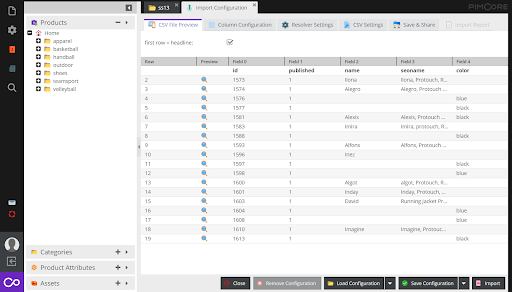
With integrated digital asset management (DAM) in addition to the classic PIM functions, PimCore offers a holistic solution for the organization and provision of digital assets.
The costs for PimCore vary depending on the size of the company, scope of use and specific requirements. In general, it can be said that PimCore can be classified as cost-effective compared to some PIM solutions on the market.
Advantages
Centralized data management: PimCore enables centralized management of all product information in one place, ensuring data consistency and accuracy.
Multilingual support: PimCore supports the management of product data in multiple languages, which is particularly beneficial for global companies.
Open source: PimCore is based on open source technology, which means that companies have access to the source code and can customize the platform according to their needs.
DAM: PimCore has integrated digital asset management (DAM) for the efficient management of digital assets.
Disadvantages
According to user reviews, some disadvantages of Pimcore could be the following:
Familiarization: due to its extensive features and low-quality user interface, Pimcore could require a longer learning curve, especially for new users.
Resource requirements: The implementation and maintenance of the open-source platform require significant resources, which is particularly disadvantageous for smaller companies with limited IT resources.
Complexity: The extensive functionality can mean that for some companies the platform offers far more functions than they actually need.
Dependency: In-depth customizations and extensions often require the support of developers, which can result in additional costs.
Salsify
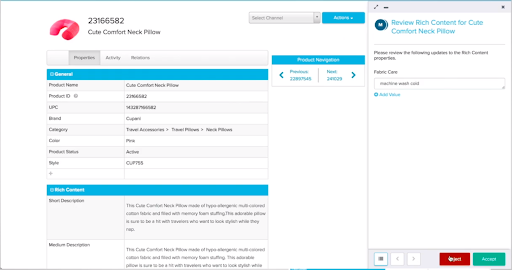
In addition to the classic PIM functions, the cloud-based platform offers a variety of other functions, including Product Experience Management (PXM) and Digital Asset Management (DAM), to ensure seamless and consistent product presentation in various sales channels.
Pricing for Salsify can vary depending on the specific requirements and scope of use. Typically, Salsify offers various monthly or annual pricing plans to suit the needs of small businesses to large corporations.
Advantages
Centralized data management: Salsify enables centralized management of all product information, ensuring consistency and accuracy.
Cloud-based: Salsify offers a cloud-based solution that enables flexible and scalable product information management. Users can access their data from anywhere and collaborate in real time.
Free trial: Interested companies have the opportunity to evaluate this PIM through a free trial. This enables a non-binding test of the platform's functions and performance.
Features such as PXM, DAM: Salsify is characterized by powerful functions, including Product Experience Management (PXM) for the design of an appealing product presentation and Digital Asset Management (DAM) for the efficient management of digital assets.
Disadvantages
Difficult onboarding: The onboarding process is very demanding due to the many functionalities. The introduction of the platform requires time and resources to unlock the full potential of Salsify.
Few integrations: Compared to some competitors, Salsify seems to offer a more limited selection of integrations. In particular, the lack of integration with WordPress is noticeable.
Lack of API connections: According to reviews, Salsify's API connections sometimes fail, which increases the time it takes to upload assets.
ATAMYA

ATAMYA is a solution that specializes in the DACH region and offers a future-oriented platform that centralizes, organizes and maintains product data. The centralized storage of data simplifies the translation, editing and refinement of product content, making it a seamless experience.
Advantages
Flexibility: The import and export of raw product data through to documents or digital assets is effortless.
Comprehensive capabilities: PIM, DAM and publishing functions in a single system.
Security: Access, viewing and editing rights are managed via role management, making the PIM system a secure system.
Disadvantages
No free trial: According to capterra, the PIM provider does not offer a free trial version.
Lengthy integration process: Due to its complexity, integrating the software with various platforms can be time-consuming.
Contentserv Product Experience Platform
The Contentserv Product Experience Platform enables companies to efficiently manage their product information and create a consistent, engaging shopping experience for their customers. The platform provides a centralized database for product information and enables seamless integration with various sales channels and e-commerce platforms.
Pricing for the Contentserv Product Experience Platform varies depending on the specific requirements and scope of implementation. As a rule, it ranges from low-cost entry-level packages for small companies to more comprehensive and expensive solutions for large, globally active companies. The exact pricing should be negotiated individually with the provider.
Advantages
Good UX: Users say the platform has a very intuitive interface.
Integrated solutions: The program includes a data quality tool, a project management tool and even a DAM module.
Consistent brand presentation: A uniform and appealing presentation of products is ensured, regardless of the sales channel.
Disadvantages
According to the review website TrustRadius, users have reported the following disadvantages:
Difficulties for smaller businesses: Some users find the platform complex and difficult to use, especially for smaller businesses. The implementation process requires significant resources and a thorough familiarity with the platform is crucial.
Implementation time: Users report that the short implementation time provided by Contentserv may not be enough to get their data in order. This leads to challenges in later use or additional work for follow-up maintenance.
Complex purchasing process: The software consists of many small modules, making it difficult for users to find the right features that meet their individual needs. This complexity significantly complicates the purchasing process and results in some users having difficulty selecting the appropriate components.
Informatica MDM — Product 360

With a focus on Master Data Management (MDM), it enables centralized, consistent and precise management of product information across different channels.
The costs for Informatica MDM - Product 360 vary depending on company size, requirements and the license model selected. As a rule, the software is offered as an enterprise solution, which leads to higher costs. However, the overall price range is from medium to high, with the investment being justified by the comprehensive functions and added value for data-driven companies.
Advantages
Central data management: Provides a central platform for managing and maintaining product information to avoid data silos.
Data quality: Improves data quality through validation, standardization and consolidation of product information.
Multilingual support: Allows product information to be managed in different languages to meet global requirements.
Integration: Seamless integration with other enterprise applications such as ERP systems, e-commerce platforms and CRM systems.
Workflow management: Enables the definition and automation of workflows for the approval and updating of product information.
Disadvantages
Cost:
Acquisition and implementation costs may be too high for small and medium-sized businesses.
Complexity:
Due to its extensive features, implementation and customization can be complex and require thorough training.
Time required: Depending on the size of the company and existing data structures, implementation can be time-consuming.
Dependence on IT resources: Maintenance and updates may require specialized IT resources, which can result in additional costs.
Oversizing: For small companies with limited products and data requirements, the solution may be oversized.
4ALLPORTAL
The Product Information Management Solution 4ALLPORTAL is a comprehensive software solution that enables companies to efficiently manage and optimize their product information. It offers functions for the central collection, maintenance and distribution of product information via various channels.
Prices for the 4ALLPORTAL solution vary depending on individual requirements and the size of the company. An exact price estimate can only be made after a needs analysis. However, the solution is generally classified as mid-priced to expensive, as it offers a comprehensive range of functions for product information management.
Advantages
Central data management: All product information is managed centrally, which ensures consistent data quality.
User-friendly interface: The user-friendly interface facilitates quick and easy maintenance of product information.
Multilingual support: Ideal for companies with an international presence as the solution supports multilingual product information.
Integration: Seamless integration with other enterprise systems such as ERP and e-commerce platforms.
Workflow automation: Facilitates the automation of processes related to product information creation and release.
Disadvantages
Cost: The acquisition and implementation costs may be perceived as 'high' for smaller companies.
Learning curve: Due to the extensive functionalities, it may take some time for users to fully master the solution.
Customization complexity: Complex configuration may be required to optimally adapt the software to a company's specific requirements.
Dependence on data quality: Effective use of the solution requires that the underlying product information is of high quality. Weaknesses in the data can impair the effectiveness of the solution.
Online Media Net (OMN) by Apollon
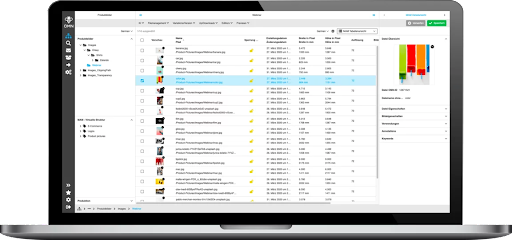
Source
Apollon is a software provider for integrated solutions that enable seamless product data communication, omnichannel product information management (PIM) and data distribution. The core product, Online Media Net (OMN), includes modules such as Channel Management, Product Information Management, Digital Asset Management, Web-to-Print and Workflow Management.
Advantages
Scalability: According to surveys, many users find the range of functions impressive and appreciate the diverse customization options.
Industry all-rounder: The solution is suitable for many industries such as automotive, finance and technology.
AI translator: The software offers an AI-based service that translates texts automatically and in real time.
Disadvantages
Overwhelming functionalities: According to this Gartner review, Apollon has complex functionalities that can be further configured
Limited front-end customization: Most customization needs to be done on the back-end, which requires the help of specialized developers.
No free version: The software does not offer a free trial version, but you can see the functionalities for yourself with a free demo. Unfortunately, prices are not mentioned on the website.
Akeneo PIM
Akeneo PIM is a leading Product Information Management (PIM) solution that aims to help companies manage and optimize their product information in a centralized way. The software enables product information to be efficiently captured, organized and managed to ensure a consistent and accurate data set for all sales channels.
Prices for Akeneo PIM can vary depending on specific requirements and company size. Basically, they range from affordable entry-level offerings for small businesses to more expensive enterprise solutions for larger organizations. The exact costs depend on factors such as the number of products managed, the number of users and the desired functions.
Advantages
Centralized data management:
Akeneo PIM provides a centralized platform to manage all product information, allowing for consistent and accurate data maintenance.
Flexibility:
Akeneo PIM is customizable and scalable to meet the changing needs of businesses.
History:
Akeneo PIM offers a comprehensive history feature that allows you to track changes to product information and revert to previous versions.
Self-hosted or cloud-based:
The flexibility to either self-host Akeneo PIM or rely on cloud services allows companies to customize the solution to their specific infrastructure requirements.
DAM (Digital Asset Management):
Akeneo PIM integrates powerful digital asset management to efficiently organize and manage media assets.
Role management:
Thanks to sophisticated role management, different users in different departments can be given appropriate access rights, ensuring security and control over data.
Disadvantages
Familiarization: Familiarization with the platform may require training as it offers extensive functionality.Integration: Seamless integration with existing systems can be a challenge in some cases and may require additional development work.
Maintenance effort: Regular updating and maintenance of the software can take up resources and time.
Unfriendly import and export functionalities: This may require additional training or assistance from the support team.
CONCLUSION
After a thorough comparison of different PIM software solutions, it is clear that each product has its own strengths and weaknesses.
It becomes clear that the choice of a PIM system depends not only on general functions, but also on the specific orientation and needs of the company planning to implement it. A comprehensive evaluation process makes it possible to assess the individual strengths and weaknesses of PIM solutions in the context of the company's requirements and to make an informed decision.
Our team of PIM experts is always on hand to assist with evaluation and implementation. With extensive expertise and field-tested methodologies, we are focused on understanding your company's unique requirements and recommending and implementing customized PIM solutions. In this way, you can ensure that your company benefits optimally from the advantages of efficient product information management.

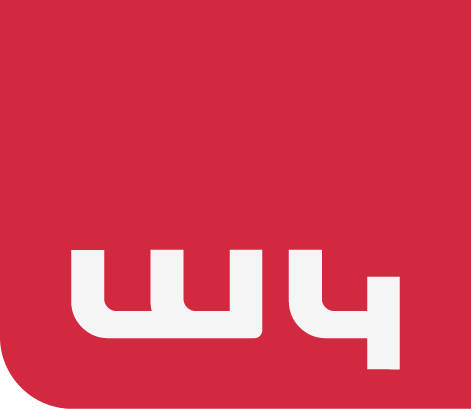





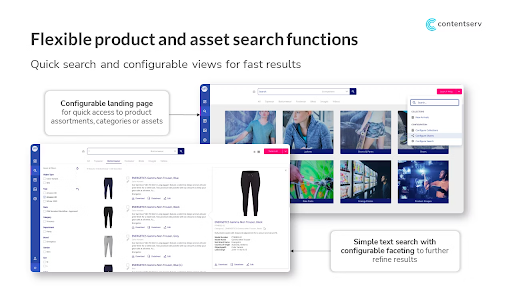

.webp)


